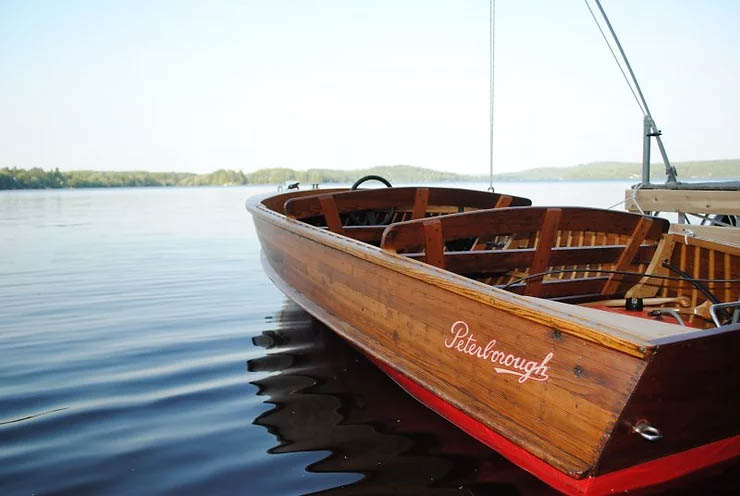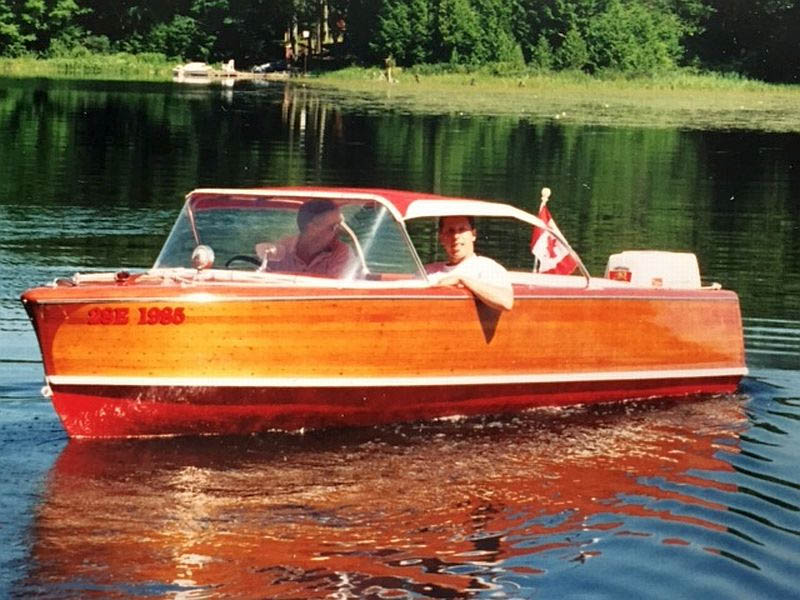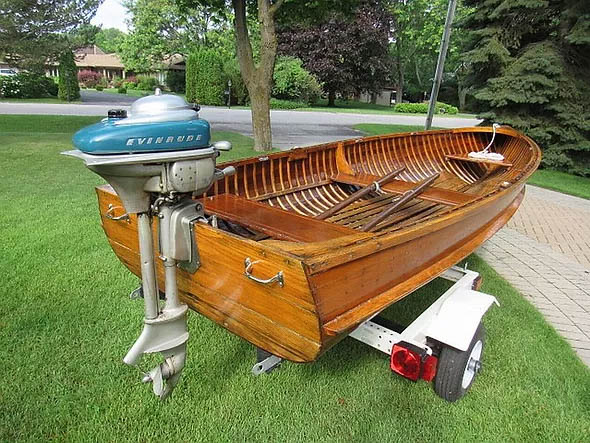Many of the boat builders we have explored so far in this series developed and enjoyed national or even international exposure with their products. In Part Five of this series, we examine a builder who became synonymous not only with canoeing, but is also perhaps the cornerstone of wooden boatbuilding in Ontario in the early-mid 1900’s. So much so, that their hometown of Peterborough became the location of the Canadian Canoe Museum.
Peterborough Boats/The Peterborough Canoe Company
Following a devastating fire that wiped out the Canadian Canoe Company in the early 1890’s, the Peterborough Canoe Company was established under new ownership in downtown Peterborough, Ontario. During the company’s early formation they employed some of the craftsmen from the burned-out Canadian Canoe Company still residing in the town. Located in central Ontario and with the city perched on the Otonabee River, Peterborough, as a city, was an early haven for outdoor recreationalists and would only grow with time.
As did its predecessor, the Peterborough Canoe Company company serviced the growing demands of the tourism and resort industries springing up along the shores of the the Kawartha Lakes region of east-central Ontario. The completion of the Trent-Severn Waterway in 1920 linking the many Kawartha Lakes together spurred this growth even further and faster.
As it began to prosper into the early 1900’s, the Peterborough Canoe Company expanded its design suite to include nearly every conceivable style of unpowered boat, plus its primary focus of every size and style of canoe you could possibly imagine. Some boats even had available accessories to convert them into sailboats with masts and centreboards. Some had a central cockpit with covered bows and sterns. Later, some had square sterns to accommodate outboard motors.
Peterborough experienced exponential growth during the first few decades of the 1900’s, due in part to the quickly expanding market for pleasure boating and the company’s wide range of offerings. It also saw success in part due to its recognized and appreciated build quality, and partly because it bought out several Ontario competitors. In 1915, the company bought out a competitor, the William English Canoe Company. Then in 1923, it merged with the Chestnut Canoe Company and became Canadian Watercraft Ltd. Then another Peterborough firm, the Canadian Canoe Company, was purchased in 1928. Between its acquisitions and its foresight towards building boats capable of utilizing an outboard motor, Peterborough would reach new heights by the early 1930s.
Peterborough was fortunate in having Outboard Marine Corporation (OMC) build its Canadian factory in Peterborough as well, where it manufactured a full line of Johnson and Evinrude outboard motors. OMC made a deal with Peterborough to supply these motors for its expanding line of motorboats. Peterborough utilized an early form of assembly line production to satisfy the growing demand for its products, not only across Canada but also in the United States and Europe. In 1948, it presented one of its canoes to Princess Elizabeth and Prince Phillip as a wedding gift.
In the ’40s and ’50s, the Peterborough Canoe Company could (and would) claim to be Canada’s largest manufacturer of boats, marketed under the brand name of simply Peterborough. It continued to expand its offering with more outboard-powered runabouts. The Streamliner class alone consisted of eight different models of multiple sizes suitable for fishing, family outings, and for the growing watersports enthusiast experimenting with the newfangled kneeboards and waterskiis.
It was during the mid-’50s that this author as a young boy enjoyed his first ride in a motorboat; a brand new sixteen-foot Streamliner-equivalent Peterborough runabout sporting a red 25-horsepower Johnson Sea Horse outboard. The boat had a windshield, remote steering, remote controls, and the signature Peterborough varnished deck and interior, along with the red painted hull bottom. The boat had been purchased by the father of my best friend at the time, who had a cottage on Long Point on Lake Erie, and I even was allowed to drive it – my first experience of driving a powerboat.
By the late ’50s, both fibreglass and aluminum started to supplant cedar strip and mahogany boatbuilding by utilizing mass-production techniques and less labour content per boat. The Peterborough Canoe Company finally closed its doors in 1961.
In 1965, the Aluminum Boats and Canoe Company of Princeville, Quebec, offering the Princecraft® line of aluminum boats, purchased the Peterborough Canoe Company and moved it to Princeville. This merger allowed the marketing of a full line of aluminum and wooden boats from canoes to utility boats to family runabouts through a comprehensive dealer network right across Canada.
To catch up on our exploration of Canada’s early boatbuilding history, you can check check out the rest of the ‘Before Fibreglass’ series below:
1) Part One- The Muskoka Region & Ditchburn Boats
2) Part Two- The Muskoka Region & Greavette Boats
3) Part Three- Georgian Bay & The Gidley Boat Company
4) Part Four- The 1000 Islands & Cliffe Craft Boats
For further information and pictures of Peterborough boats, check out these websites:
1) Johnny’s Little Boat Shop- Speedster Dubois
5) Douglas Brooks Boatbuilding







